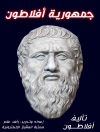Adopting the perspective of anthropology of art and combining it with global academic insights, this book helps the readers to recognize that “history is, in great measure, the record of human activity which spreads from the local to the regional, from the regional to the global, and from the global to the universal.” Readers will learn that China was not only the first country to create porcelain, but also the first to export it to the world, both the products and its techniques. Therefore, the history of Chinese ceramics reflects the history of Chinese foreign trade on the one hand and depicts the expansion of Chinese ceramic techniques and cultures on the other. In addition to ceramics types, molds, decoration, and techniques, the book analyzes the spiritual impacts and aesthetic conceptions embodied in the utensils of daily use by the Chinese literati. Therefore, it reaches the conclusion that ideological systems and not technological systems are what bring about social revolutions. In addition, the book is richly illustrated with pictures of earthenware and finely glazed pieces from later periods.
สารบัญ
Earthenware of the Neolithic Period.- Ceramics of the Xia and Shang Dynasties.- Ceramics of the Zhou Dynasty.- Ceramics of the Spring and Autumn Period and the Warring States Period.- Ceramics of the Qin and Han Dynasties.- Ceramics of the Wei, Jin and the Southern and Northern Dynasties.- Ceramics of the Sui, Tang and Five Dynasties.- Ceramics of the Song, Liao and Jin Dynasties.- Ceramics of the Yuan Dynasty.- Ceramics of the Ming Dynasty.- Ceramics of the Qing Dynasty.
เกี่ยวกับผู้แต่ง
Tsinghua-educated, Fang Lili has studied under the guidance of Fei Xiaotong and paid her attention to ceramics against a global background. She serves as President of China Society of Anthropology of Arts, and Director of Anthropology of Arts Research Institute, Chinese National Academy of Arts.












